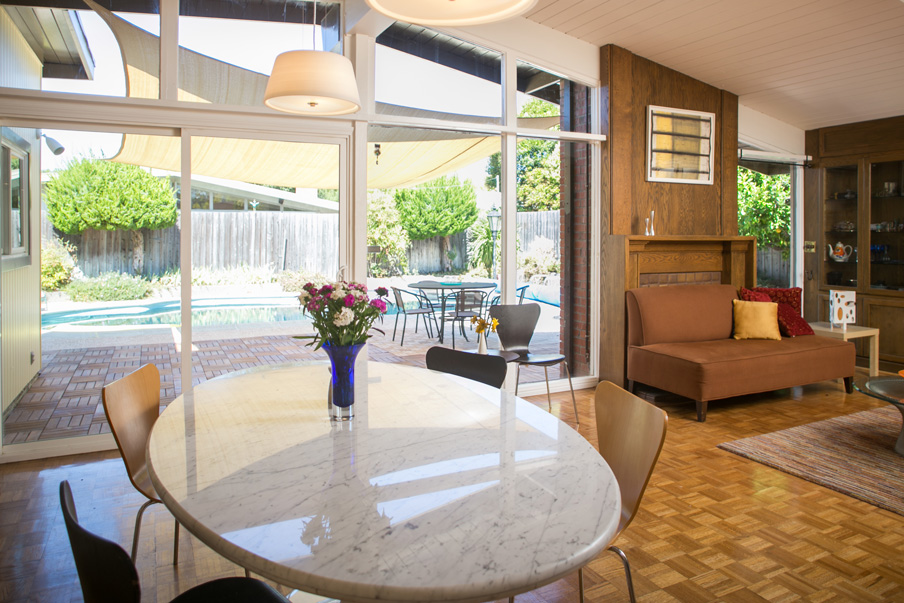This post first ran in 2016.
Most people who pay attention to contemporary American architecture have heard of Eichler homes. Developer Joseph Eichler’s dream of bringing beautiful, affordable modern design to the masses was spurred by his admiration of Frank Lloyd-Wright’s soaring architectural designs, and the homes he built throughout California beginning in the late 1940s through the ‘60s have become sought-after touchstones of mid-century modern architecture.
In my corner of the Bay Area another developer realized a similar ambition, one with some differences – and a few surprising advantages – over Eichler’s iconic designs.
A Bit of Terra Linda History
In the early 1950s, when the area north of San Rafael known as Terra Linda was being developed at a furious pace, Alliance Construction conceived and built a planned community of around 200 three- and four-bedroom homes.
These homes, aimed at middle-class families wanting to escape the fog and urban bustle of San Francisco, cost between $13,000 and $15,000 and shared many of the attractions of Eichler designs: open floor plans with post-and-beam construction, cork flooring, hydronic radiant heat, large windows and layouts that emphasized indoor/outdoor living.
Differences Between Eichlers and Alliances
Despite the similarities, there are some differences that make owning an Alliance a little different from owning an Eichler.
Size
Alliance homes are a little smaller than Eichlers. Most run between 1,200 and 1,500 square feet, while Eichler homes in the area tend to start at around 1,700 square feet.
Floor Plan
Marin Eichlers have a variety of floor plans, including the famous Eichler atrium. Alliance homes are generally L-shaped, and while none offer an atrium, some boast a covered patio area opening from a sliding-glass door in a bedroom. These were advertised as a special attraction for families with young children, who could “come indoors, change wet or muddy clothes and wash up without tracking dirt into the rest of the house,” as the San Francisco Chronicle put it in 1954.
Roof
While many Bay Area Eichler roofs are flat, Alliances roofs have some pitch, which may provide slightly better drainage, leaving them less susceptible to the damage that can accompany water pooling.
Heating
Many Bay Area Eichlers have stainless or galvanized steel piping. These pipes are prone to corrosion, and when you spring a leak in your cement-slab-encased radiant heating system, problems can abound. Leaks may be hard to detect, and difficult if not impossible, to repair.
Alliance homes have copper piping, which is less likely to corrode and leak, and is easier to fix when it does.
Reputation
There’s no way around it: Eichlers are better-known and have a certain cachet that other mid-century modern homes, including Alliances, don’t. They’re much sought-after and prized by fans of modern design, and conjure up visions of sleek elegance among even people with only a passing familiarity with architecture.
That said, the differences between them make Alliance homes a great choice for people with a yen for mid-century modern design.
Remodeling
In terms of remodeling, most of the same caveats go equally for Eichlers and Alliances: count on doing some infrastructure updates on these gently aging gems, and most importantly, stay true to the mid-century modern aesthetic.


